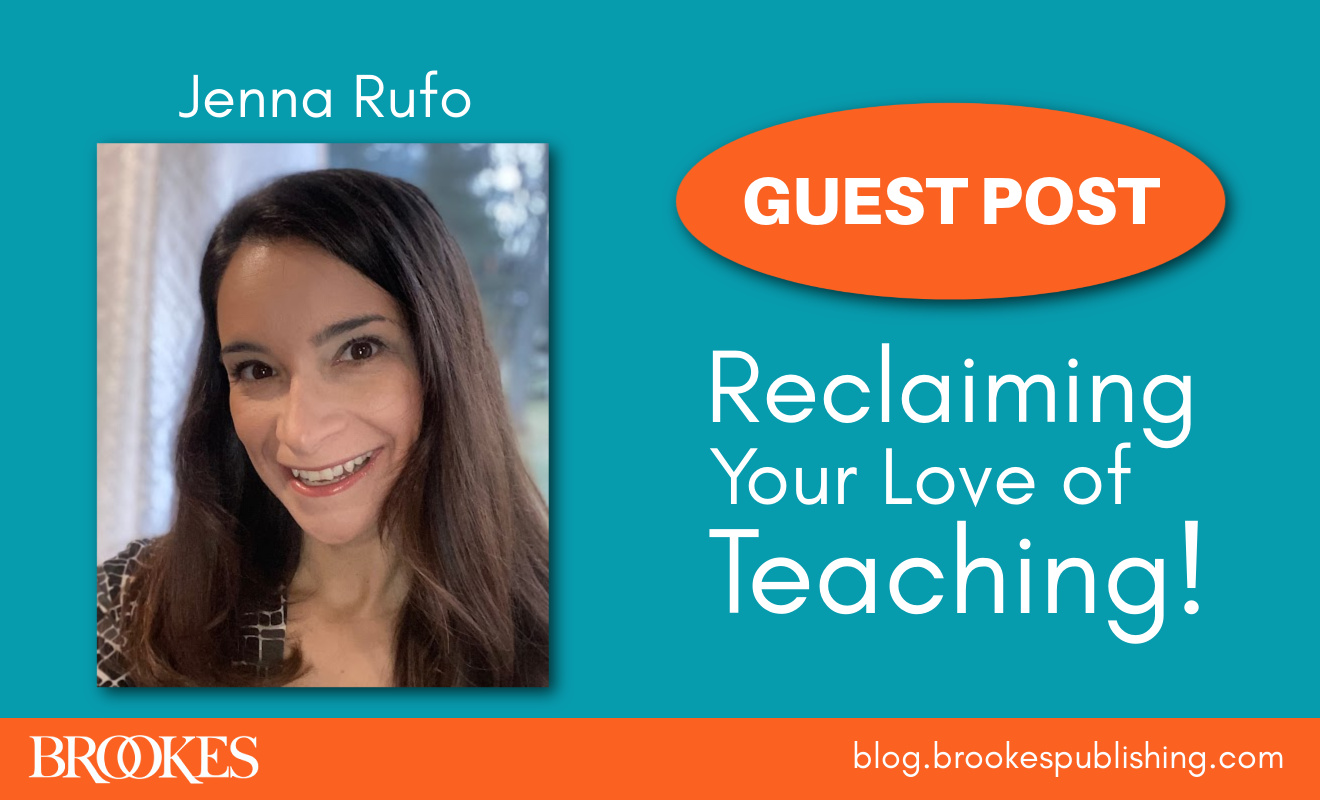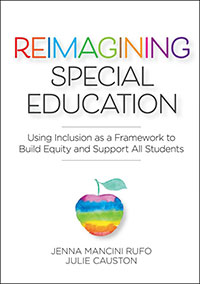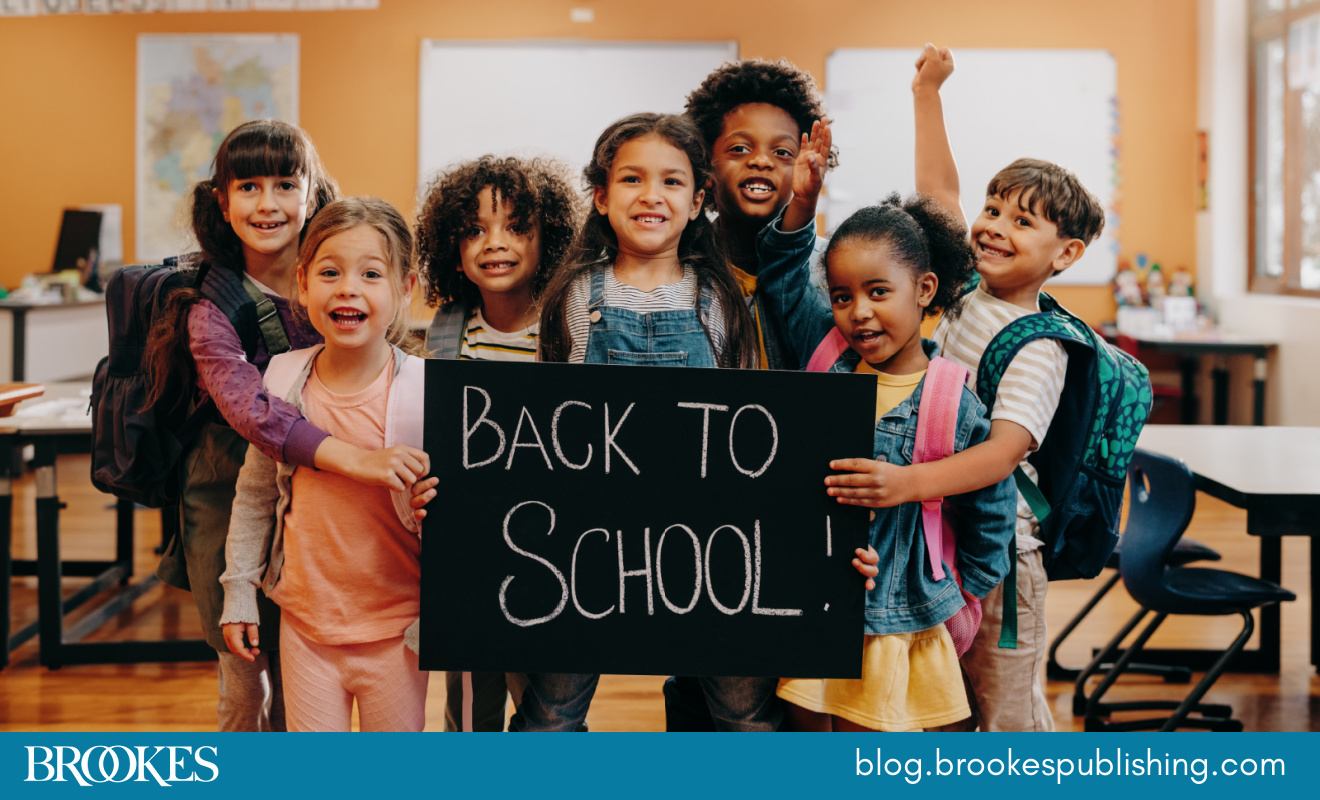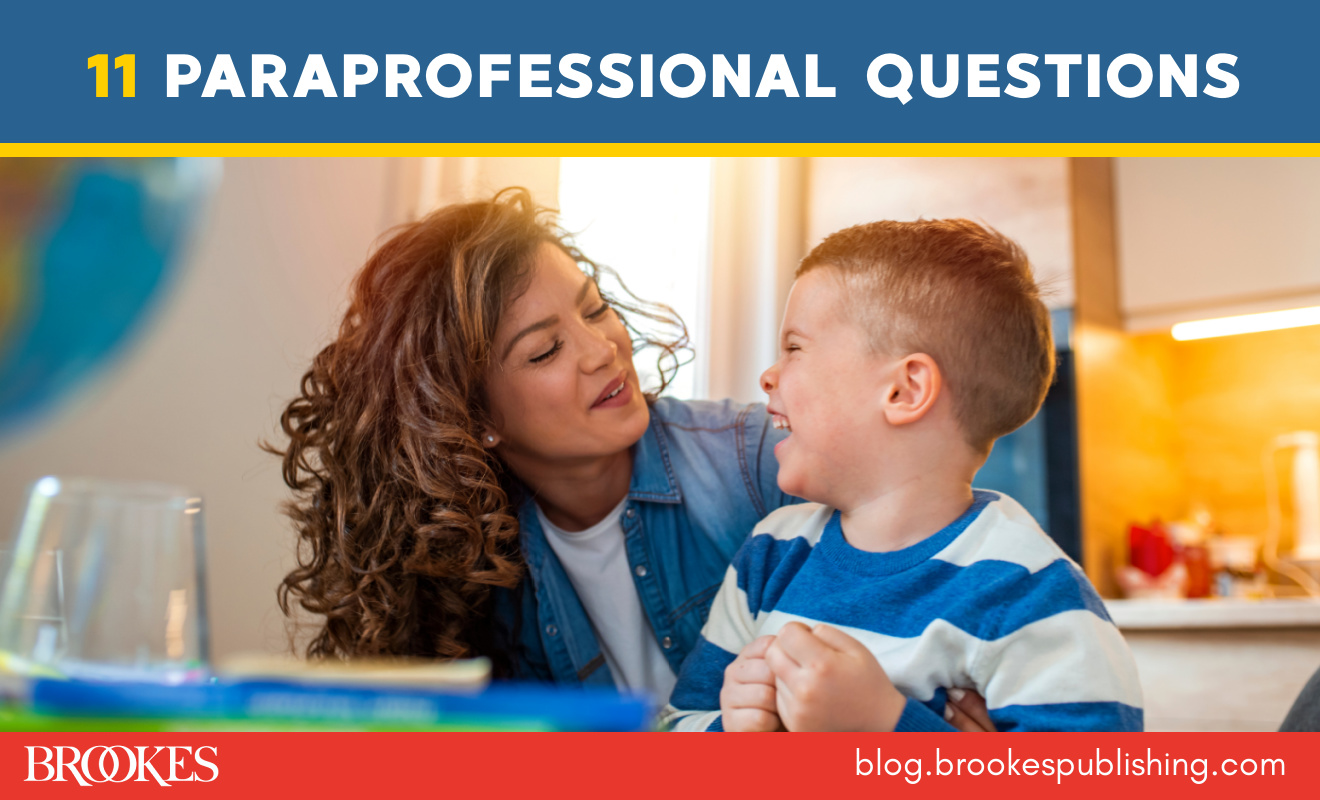Best Year Ever! Back-to-School Tips on Reclaiming Your Love of Teaching
September 6, 2022
If you’re feeling anxious about the school year ahead and pressured to be the “perfect teacher” for students who have endured a turbulent few years, today’s guest post is a must-read. Brookes author Jenna Mancini Rufo, Ed.D., is here to share insights from a teacher who—in the midst of the pandemic—still managed to have her best-ever year in the classroom. Read on to learn how this creative educator triumphed in the classroom: not through rigid structure and perfectionism, but by incorporating more choice, flexibility, openness, and grace into her teaching approach.
***
The classroom felt different. Special. When I walked into the brightly colored space adorned with motivating posters and student work, sixth graders were scattered about the room engaged in a math project in small groups. As I looked around, the teacher, Jen, popped up off the floor calling out to me, “I’m over here!”
Jen described the lesson objective, and her students excitedly shared their projects with me. After spending some more time in the classroom, I knew that my initial assessment of Jen’s class was correct: it really was something special. Students were excited about learning, Jen’s enthusiasm was contagious, and there was an intangible feeling of warmth and respect that permeated the environment. I pulled Jen aside before I departed and told her how awesome I thought she was. She replied, “Thank you. I’ve been teaching for 16 years and this is my best year ever!”
Say what???
I visited Jen’s class in December 2021. At that point, we were almost two years into the pandemic and at the beginning of yet another COVID surge. Most teachers I worked with that year were tired. Burned out. Worn down from the moving targets of mask mandates, quarantine rules, and the increasing polarization both of schools and the country at large. And really, who could blame them for feeling this way?
But somehow, Jen was having her “best year ever.” Throughout the next week, I kept thinking about Jen and the stark contrast between her joyful classroom and the many others I had observed throughout the pandemic. I decided to reach out to her. I wanted to understand how Jen was experiencing success when so many were struggling. She agreed to talk to me about her experience.
During our conversation, Jen revealed that in addition to the challenges most teachers were facing with pandemic-era instruction, she had undergone some fairly significant events in her personal life which caused her to rethink how she approached the school year. “I knew if I didn’t do something differently,” she said, “I wouldn’t survive.”
Jen decided to take a more flexible approach to her teaching. If students were more comfortable sitting on the floor to work, so be it. If they struggled with a concept and didn’t perform well on a test, she provided additional opportunities for mastery without grading penalties. “I just want them to learn the content,” she stated. “What does it matter if they get it the first time or not?”
Choice and flexibility also became hallmarks of Jen’s teaching. She provided options for student work products and the ways they demonstrated knowledge. Jen was also flexible with her own lesson planning. If students needed more time working on a concept that was foundational to future skills, she didn’t rush them through it just to get to the next topic. Jen said, “I knew that I needed flexibility throughout the pandemic. If this was something I needed as an adult, then why wouldn’t I offer that same grace to my students?”
Perhaps Jen’s most radical decision was to significantly reduce, and even eliminate, homework. Students were told that if they came to class, worked hard, and did what was expected, homework wouldn’t be necessary. This concept was viewed skeptically by some of Jen’s colleagues as well as parents. But six months later, when state assessment scores were in, Jen’s classes performed just as well as the other math classes that continued to give homework.
Beyond academics, Jen made building relationships a priority. She took the time to really get to know her students, whose school experiences over the past few years left many of them feeling as disoriented and frustrated as their teachers. Her investment in developing connections resulted in students becoming more open and honest with her. Jen gave the same honesty to them in return. If she was having a bad day, she’d be up front with her students, asking for their patience and cooperation. Her students viewed her not just as a teacher, but as a person. “I let go of the idea that I had to be this perfect teacher,” she said.
As Jen embraced a new approach to teaching during the pandemic, she prioritized what was most important, providing grace and flexibility both to her students and to herself. She let go of ideas about how schools should be, the way students should act, and what she as a teacher was supposed to do. Not only did this philosophy result in more joyful teaching and learning, it is also highly compatible with an inclusive approach to education.
What can we learn from Jen so that we all have the “best year ever?”
Let’s adopt an inclusive mission statement for 2022-2023 to reclaim our joy of teaching and instill a love of learning in students. This school year, make a pledge to:
- View students for their gifts rather than their deficits.
- Abandon a rigid, one-size-fits-all approach.
- Invest in relationships built upon kindness, grace, and understanding.
- Prioritize the most essential concepts and skills, adapting instruction to meet student needs.
- Provide flexibility in the ways students respond and demonstrate their learning.
- Offer yourself the same flexibility and grace you promise students.
- Remember why you’re really in this profession.
It is easy to lose sight of our true purpose for teaching, especially after the last few years. Yet, adopting an inclusive mindset similar to Jen’s will take you one step closer to making this school year the best year ever!
Thanks to Jen for her inspiring work!
***
Our hats are off to educators like Jen, who know that the principles of inclusive education are good for all students and lead to better outcomes for everyone. Thanks to Jenna Rufo for sharing Jen’s story and distilling her approach into tips for the new school year. For more in-depth practical guidance on reimagining teaching practices and supporting authentic inclusion in a changing world, be sure to pick up Jenna’s book with Dr. Julie Causton, Reimagining Special Education.
 Reimagining Special Education
Reimagining Special Education
Using Inclusion as a Framework to Build Equity and Support All Students
By Jenna M. Rufo, Ed.D., & Julie Causton, Ph.D.
This visionary guidebook helps K–12 school leaders and educators take the lessons of the COVID-19 era and turn them into action: by closely examining what worked during distance learning, letting go of practices that keep some students struggling, and planning new routines and environments that meet the needs of every learner.




Write a Comment
Your email address will not be published. Required fields are marked *
Post a Comment